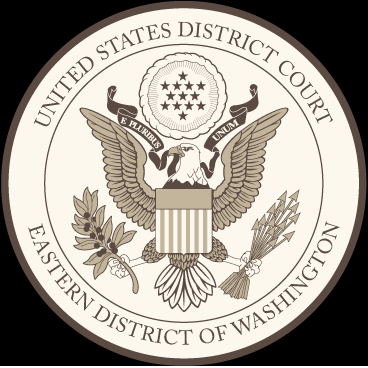Radioactive Waste 173 - U.S. District Court Revises Consent Decree At Hanford
Hanford, the gift that keeps on giving. It has been awhile since I blogged about Hanford, but there is so much in the news about the Nuclear Reservation lately that I suppose it is time to return to one of the most radioactively contaminated sites on the planet.
The U.S. Department of Energy and the Washington State government have been fighting in court for years over DoE missing deadlines for cleaning up certain parts of the Hanford complex. The DoE has failed to meet past deadlines and will certainly miss future deadlines set forth in a 2010 consent decree. A vitrification plant is being constructed at Hanford to mix radioactive waste with sand and other chemical which are then fused into glass logs for permanent disposal. The consent decree contained a deadline of 2022 for the plant to be fully operational which will not be met. The DoE has missed other deadlines with respect to emptying leaking underground tanks of waste at Hanford.
On March 12th of this year, U.S. Judge Rosanna Malouf Peterson closed the 2010 consent decree lawsuit. The DoE initially proposed that a revised consent decree give them flexibility to set and change deadlines as technical issues were resolved. The judge would not accept this proposal and demanded firm deadlines. The DoE then suggested a system of deadline extensions that could be easily invoked if problems arose that could cause delays. The judge also rejected this proposal stating that the extension system being proposed would “create a vacuum in which DOE would be free to proceed at its own rate without any safeguards for Washington or enforcement by the court."
The federal judge set a series of new Hanford deadlines for cleanup that includes a requirement that the long delayed vitrification plant has to be fully operational by 2036. This date represents a compromise between dates proposed by the DoE and Washington State. The judge also set new deadlines for removing waste from a group of leaking single walled underground tanks. The judge set stronger reporting requirements for the DoE. The judge said that "These milestones should be viewed as enforceable legal duties rather than optimal, idealistic goals." Under the revised consent decree, the State of Washington can return to court if the DoE fails to meet the terms of the agreement. The DoE can invoke an amendment to the original consent decree if it has "good cause" to request extensions.
The judge was harshly critical of the "litigation tactics" employed by the DoE during the case. She said " “The court is disappointed that while DOE repeatedly has claimed that budgetary restrictions and limited financial resources have hindered DOE’s ability to perform its agreed duties at Hanford, too much time and public money has been wasted in this case needlessly."
While the vitrification plant must be able to process high-level radioactive waste by 2036, it has to successfully demonstrate its process by 2033. It will also be processing low-level radioactive waste and must demonstrate this capability by 2023. With respect to emptying eleven single walled underground tanks of waste, four must be emptied by 2020 and the rest by 2024. The DoE has been given the flexibility to choose which tanks to empty by which deadline. More double walled tanks may need to be built to take the waste from the single walled tanks. However, this may not be a solution to the problem of leaking tanks in view of the fact that there has been recent news about one of the existing double walled tanks at Hanford leaking.
